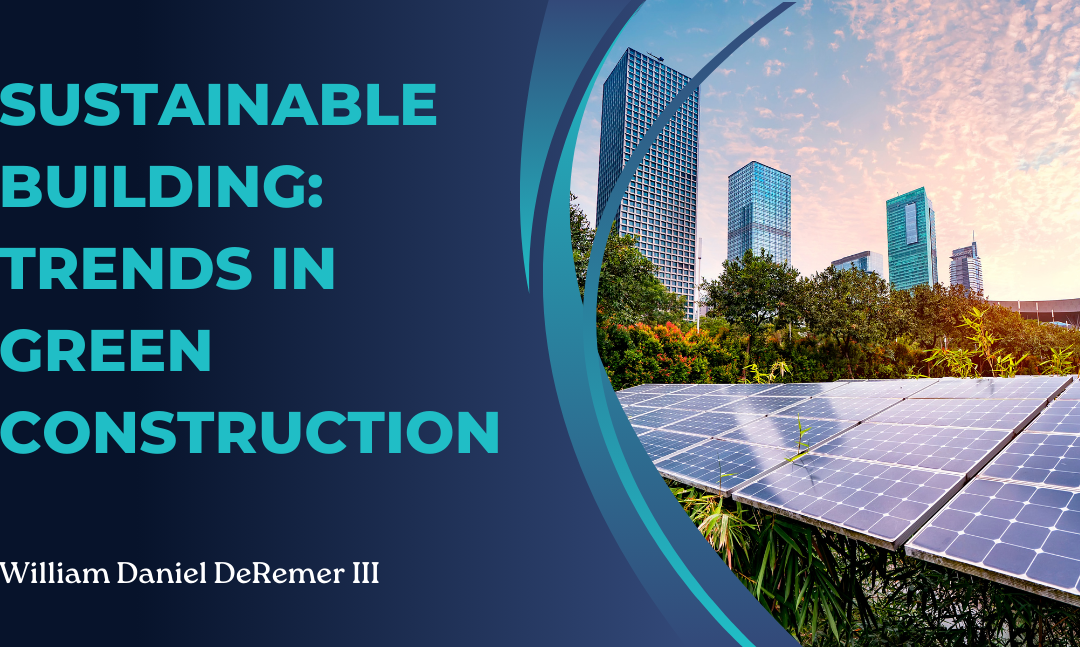The construction industry has traditionally been one of the largest contributors to global carbon emissions and resource consumption. However, the growing emphasis on sustainability has led to significant advancements in green building practices. Today, sustainable construction isn’t just a trend—it’s a necessity driven by environmental responsibility, regulatory demands, and consumer expectations.
One of the most prominent shifts in green construction is the use of sustainable materials. Builders are moving away from conventional products and embracing alternatives like recycled steel, bamboo, reclaimed wood, and low-VOC (volatile organic compound) paints and finishes. These materials reduce the environmental impact of construction while also offering durability and aesthetic appeal.
Energy efficiency is at the core of sustainable building design. Modern green buildings are designed to use less energy through proper insulation, smart HVAC systems, and energy-efficient windows and lighting. Solar panels and geothermal systems are increasingly being incorporated to harness renewable energy sources, significantly reducing a building’s carbon footprint over its lifecycle.
Water conservation is another key focus in green construction. Low-flow plumbing fixtures, rainwater harvesting systems, and drought-tolerant landscaping can drastically reduce water usage in both residential and commercial projects. In areas prone to drought or water shortages, these practices are not only environmentally responsible but also economically beneficial.
The concept of passive design is gaining traction among architects and builders. Passive buildings are designed to take full advantage of their environment, using natural sunlight for lighting and heating, optimizing building orientation for airflow, and minimizing the need for artificial climate control. These strategies result in lower energy bills and a more comfortable living or working environment.
Waste reduction is a critical component of sustainable building. Construction and demolition generate enormous amounts of waste, much of which ends up in landfills. Green builders aim to minimize this waste through careful planning, material reuse, recycling programs, and modular construction techniques. Prefabricated components can reduce on-site waste and shorten construction timelines.
Green certifications, such as LEED (Leadership in Energy and Environmental Design), WELL, and ENERGY STAR, are becoming increasingly important in the construction world. These certifications help guide best practices and serve as benchmarks for sustainability. They also add value to properties, as buyers and tenants are often willing to pay a premium for certified green buildings.
Technology is playing a huge role in advancing sustainable construction. Building Information Modeling (BIM) allows for more efficient project planning and resource management. Smart building systems monitor and control energy use in real time, while environmental sensors track air quality, humidity, and temperature to ensure a healthy indoor environment.
Urban planning and community development are also seeing a sustainable shift. Green construction is no longer just about the building—it’s about how the building interacts with its surroundings. Transit-oriented developments, green roofs, bike-friendly designs, and mixed-use communities all contribute to reducing environmental impact and improving quality of life.
Ultimately, sustainable building practices benefit more than the environment—they improve health, comfort, and long-term cost savings for occupants. With increasing regulatory support and growing consumer demand, the trend toward green construction is here to stay.
As we move forward, the construction industry will continue to innovate with new materials, smarter systems, and integrated design approaches. Embracing sustainability isn’t just good for business—it’s essential for creating a better future.

